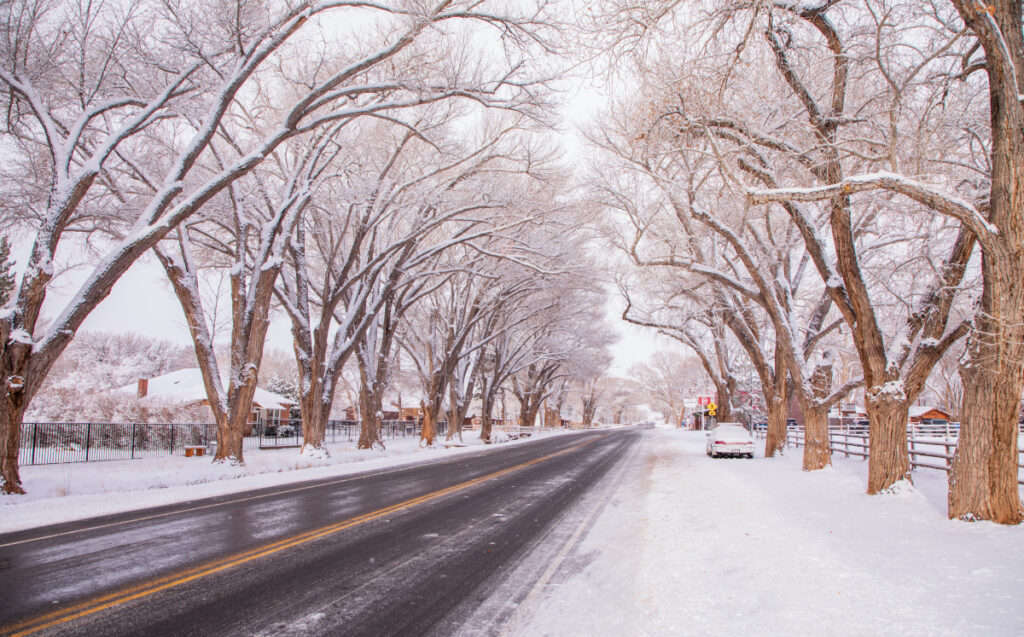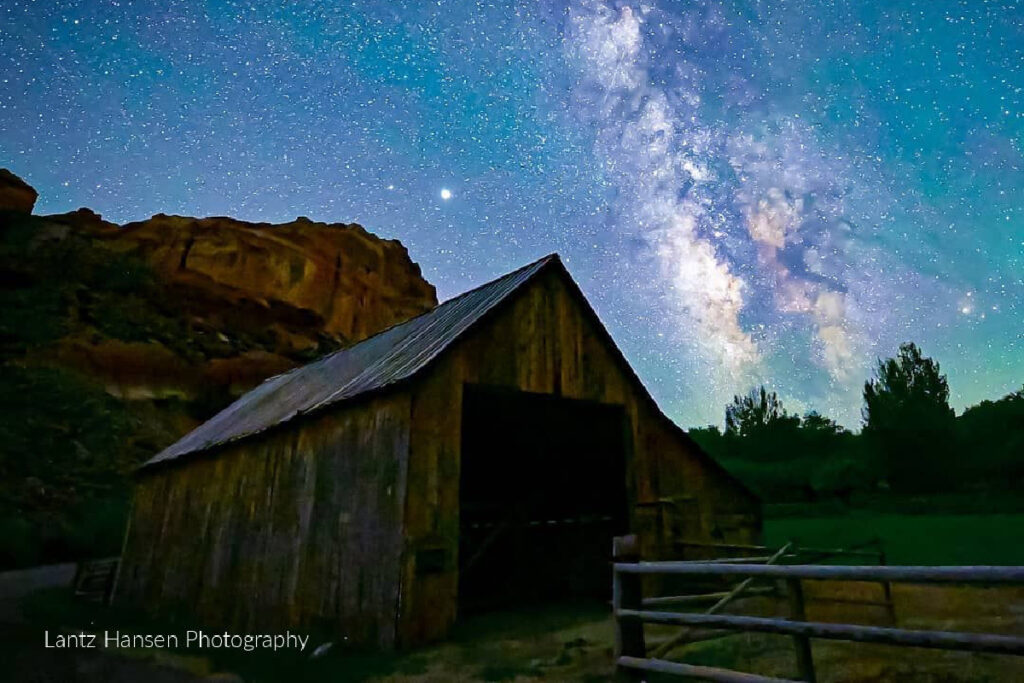Winter is generally not the season you think of when considering a trip to Capitol Reef National Park, and for that reason it’s exactly why you should plan a visit. No crowds, no lines, off-season rates, and a variety of things to do from desert off-roading and hiking to snowmobiling and snowshoeing.
Capitol Reef National Park is famously known for its stunning rock formations, colorful canyons, and rich history. But what makes it even more special in the winter is the contrast between the snow-covered peaks and the red sandstone cliffs, creating a breathtaking scenery that you won’t find anywhere else.

Here are a few tips for planning your own winter adventure in Capitol Reef Country.
Hiking Trails
One of the best ways to experience Capitol Reef National Park is by hiking. The park has over 150 miles of trails, ranging from easy to strenuous, and suitable for different skill levels and interests. Bring winter socks, hiking boots, warm clothes, and plenty of water and snacks. Check the trail conditions and closures at the visitor center before you venture out on the trails. Here are a few recommendations.
The Hickman Bridge Trail: This is a 2-mile round-trip hike that leads to a natural arch that spans 133 feet. The trail is moderately steep and rocky, but the reward is worth it. The arch is impressive and offers a great photo opportunity. We also enjoyed the views of the Fremont River and the Capitol Reef along the way.
The Chimney Rock Trail: This is a 3.6-mile loop hike that climbs up to a ridge overlooking the Chimney Rock, a towering spire that rises above the valley. The trail is strenuous and exposed, but the views are spectacular. We could see the Waterpocket Fold, the main geological feature of the park, which is a 100-mile-long wrinkle in the earth’s crust. We also saw some ancient petroglyphs, which are rock carvings made by the Fremont people who lived in the area between 600 and 1300 AD.
The Cassidy Arch Trail: This is a 3.4-mile round-trip hike that leads to a large arch named after the outlaw Butch Cassidy, who allegedly hid in the area. The trail is challenging and steep, but the arch is amazing. It is perched on the edge of a cliff and spans 50 feet. We also had a fun time scrambling on the rocks and exploring the nearby canyons.
For more suggestions on places to visit at Capitol Reef read this article on how to visit the park in a day.
Stargazing
Capitol Reef National Park and the town of Torrey have International Dark Sky designations, which means that it has minimal light pollution and excellent visibility. They area some of the best places to see the stars in the country. When available you can join a ranger-led program or use your own telescope to marvel at the night sky. You can see thousands of stars, planets, constellations, and even the Milky Way at certain times of the year.

Alpine Sports and Other Winter Activities
For those looking for a new alpine winter experience, the westside of Capitol Reef Country is high country where high plateaus and mountains receive an abundance of snow each winter.
Ice Fishing and Snowmobiling
Bring your tackle and try your hand at netting a fish at one of many mountain lakes in the Dixie and Fishlake National Forests. One of the most popular places for fishing and other year-round recreation is Boulder Mountain. Reaching elevations above 11,000 feet, Boulder Mountain receives an abundance of Utah’s famous light powder snow that blankets the forest transforming hundreds of miles of trails into a snowmobile haven.
Thousand Lake Mountain and Fish Lake Mountain also offer opportunities for winter fishing, hiking, and snow sports.
Always check weather conditions before heading out on a winter adventure in Capitol Reef Country, dress in layers, and use common sense when exploring the remote areas.
Getting There
Capitol Reef National Park is located in the south-central region of Utah, about 220 miles from Salt Lake City. All routes have well-maintained roads; however, we do recommend checking the weather and road conditions before you leave. You can check road conditions at this link and download the provided app for your phone.
Where to Stay
Lodging may be more limited during the winter months but there are still plenty of options in the small towns on Highway 24 from Loa to Hanksville. You can check availability by visiting our website.
If you prefer camping, even in the winter months, you’re in luck! The Fruita Campground, which is open year-round and operates on a first-come, first-served basis from November to February. The campground is located in the historic Fruita district, where pioneers settled in the late 1800s and planted orchards. The campground has 71 sites, each with a picnic table and a fire pit. There are also restrooms, drinking water, and a dump station. The fee is $20 per night, and you can pay at the self-registration station near the entrance. The campground is very popular, so we arrived early in the morning to secure a spot. Additional information is available at the park’s official website.
Where to Eat
After a long day of exploring the park you’ll ready to eat. Luckily, there are several options for dining and shopping in and around the park, even in the winter. A list of restaurants is listed on this website, here’s a link to take you directly to the page.
Final Thoughts
A trip to Capitol Reef National Park in the winter can be one of the best experiences you can have visting this colorful and adventurous region of Utah. The beauty, the solitude, and the adventure of the park will lure you back time and time again. You’ll want to return to learn more about the history, the culture, and the nature of the area. We highly recommend visiting Capitol Reef National Park in the winter, and we hope you’ll come visit us in the magical time of year.
Keep Capitol Reef Country Forever Mighty
What is Forever Mighty? It’s practicing responsible travel while visiting Utah and Capitol Reef Country by following the principles of Tread Lightly and Leave No Trace.
Plan ahead and prepare, travel and camp on durable surfaces, dispose of waste properly, leave what you find, minimize campfire impacts, respect wildlife, be considerate of others, support local business and honor community, history and heritage. Help us keep Utah and Capitol Reef Country’s outdoor recreation areas beautiful, healthy, and accessible.
